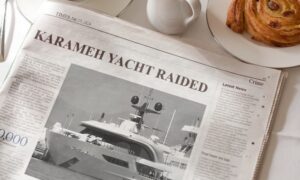This is a guest post by Karen Keninger, director of the National Library Service for the Blind and Physically Handicapped (NLS).
The NLS has a couple years of adventures ahead of it—adventures that sound chiefly technological but are really about meeting our patrons’ needs as reliably, easily and responsibly as possible. Technology is exciting in itself—but much more exciting is how it advances the ability of NLS and its network of cooperating libraries to serve our patrons who cannot read in conventional formats.
Let’s start with the new public gateway into our adventures—the NLS website. Our previous website, a solid workhorse for years, was starting to look a bit, shall we say, 1993-ish to sighted visitors. In 2017, with smart information architecture and navigation that’s been tested and retested with screen readers, we can provide a website that serves our blind patrons wonderfully—but that also has visual meaning and appeal for the sighted family, support assistants and staff members who use it alongside them. We also added tools and features for sighted visitors who may need to adjust what is on a monitor for their varying levels of visual acuity. It’s high time.
The newly redesigned NLS home page.
On to the heart of our adventures: four pilots that will help ease the burden on our network of cooperating libraries and get more NLS materials to more patrons faster than ever before.
Duplication-on-Demand. To reduce wait times for talking books, NLS is testing a system allowing network libraries to duplicate talking-book files onto digital cartridges at their own state-based locations. And patrons would get to say what favorites they want loaded on a given cartridge from the entire NLS collection! Our libraries would no longer need to forecast what will be most popular and order preduplicated cartridges from the central NLS-managed distribution centers.
Synthetic Speech. Annoying robot voices are a thing of the past. In-person voice recording is still our gold standard, and we won’t change that. But synthetic speech can help us make available material we couldn’t easily record—think bibliographies, endnotes and recipes! Synthetic speech can also help us make “breaking news” or time-sensitive materials available more quickly.
Wireless Download. We’re exploring wireless transmission of talking-book files directly to simple devices in patrons’ home, allowing them to load the files from their devices onto cartridges themselves. Think of the ease of obtaining an album from iTunes or Amazon. And think, too, of the logistical and financial burdens this would take off our frontline network libraries.
Braille eReader. Picture the Times Square news ticker with its flow of words. Now picture those words in braille—that’s easy to do, since braille was (in a certain sense) the first widespread digitization format for words. Braille eReaders can turn a digital file instantaneously into braille for tactile reading, and a new generation of braille eReaders has brought the price point of such readers down to where NLS—working with the renowned Perkins Library in Watertown, Mass.—can now study the viability of providing eReaders to our patrons, just as we loan digital talking-book players.
These are the adventures that lie before NLS over the next two years. We’re already measuring our offerings to our patrons in terabytes of data rather than solely in linear shelf feet of braille volumes and hours of audio. Petabytes are on the horizon. And that horizon—whether of materials to offer, of technologies to use, of services to offer patrons, and, above all, of patrons to serve—is widening every day. We’re happy to be rolling up our sleeves for all this and more.

















